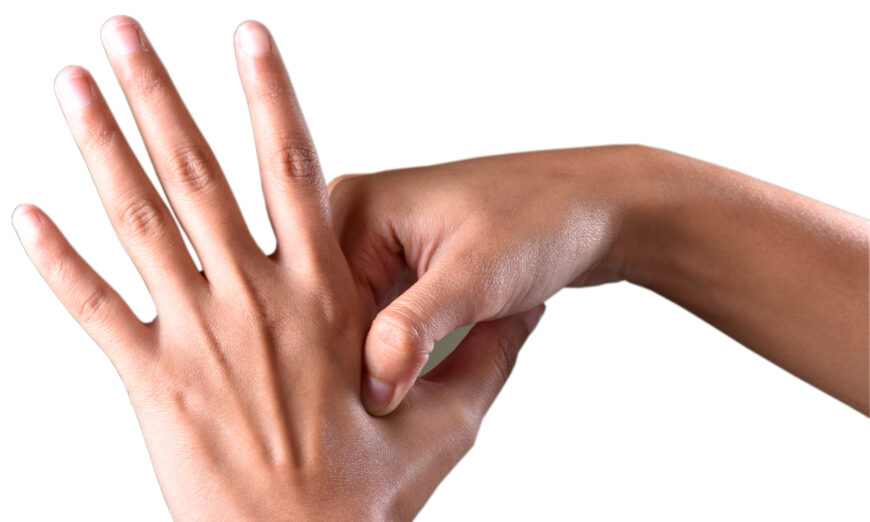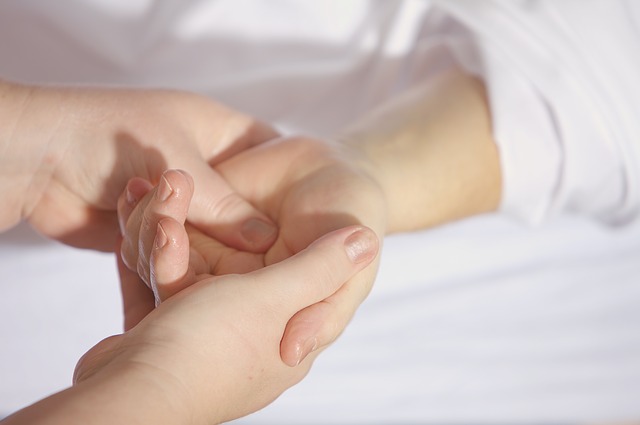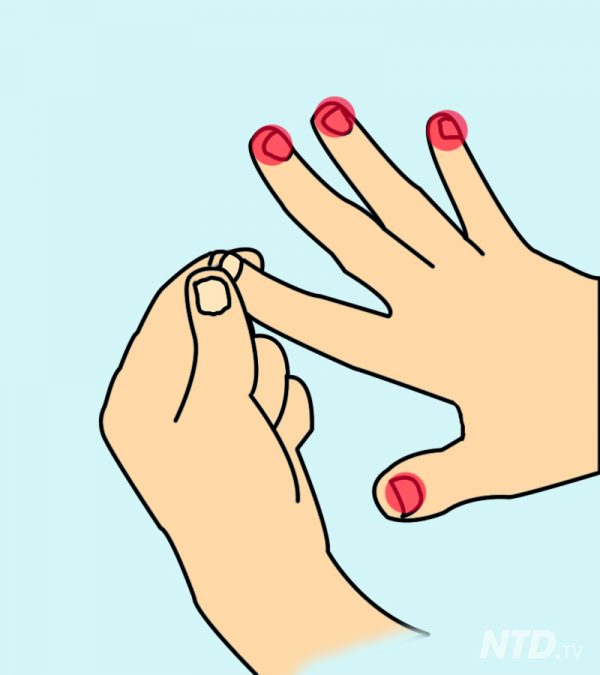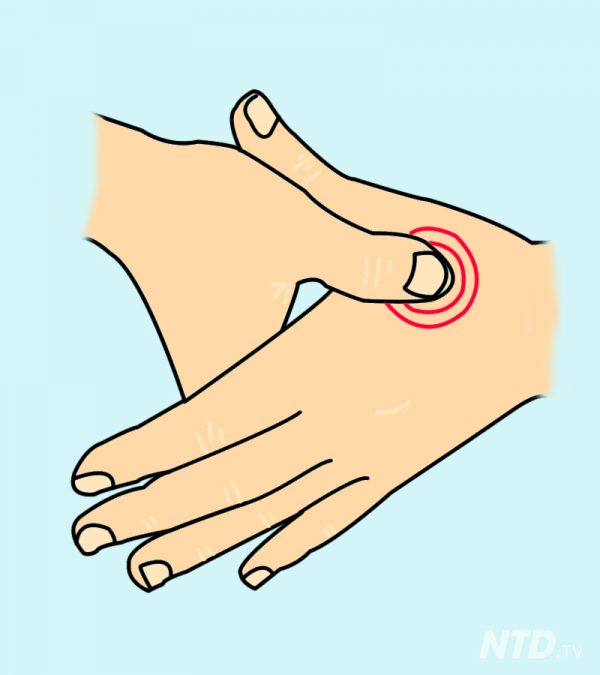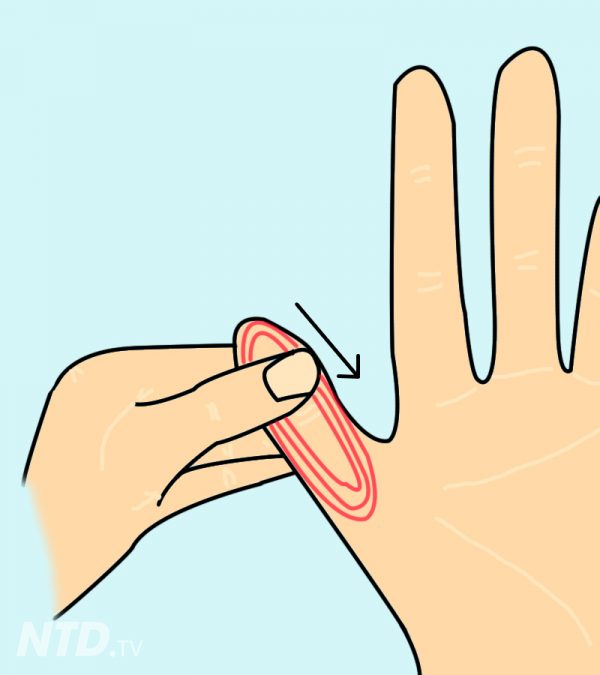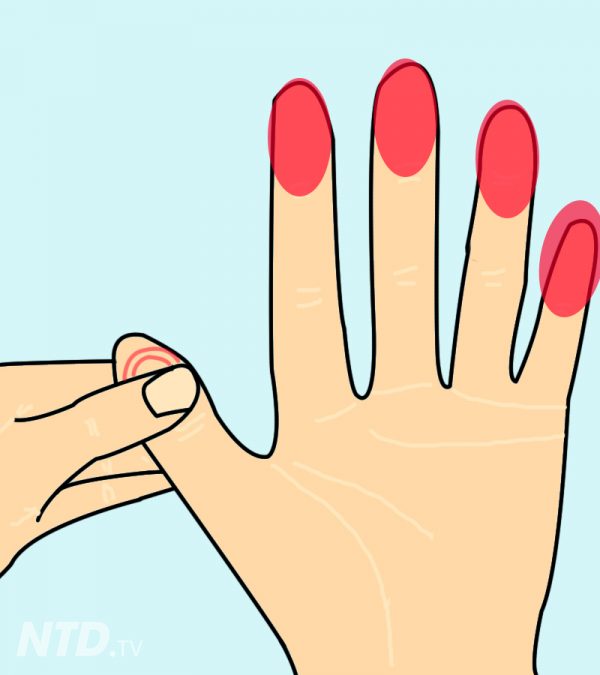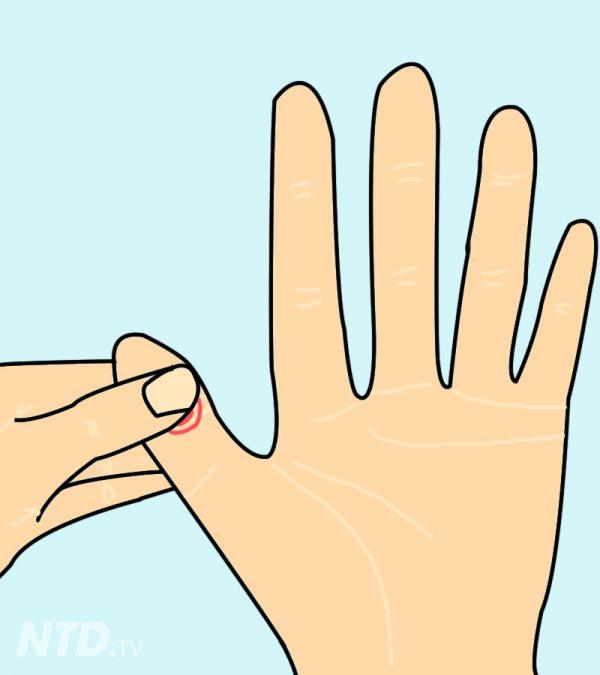
Reflexology is a type of massage therapy that involves applying varying amounts of pressure to different parts of the feet, hands, and ears. The practice is purported to have a number of health benefits, from pain relief to reduced stress to help with digestion. It’s an ancient technique with roots in cultures all around the world and today is used as a complementary therapy for a variety of health concerns.
Some modern research shows benefits to the practice, but robust, well-designed studies are lacking. However, there’s very little risk involved with reflexology, so if you’re interested in giving it a try, here’s a primer on what you may want to know.
Definition of Reflexology
Reflexology is a form of massage therapy that focuses on pressure points on the hands and feet meant to help relieve a number of health issues, including pain, sleep troubles, and anxiety, per the National Center for Complementary and Integrative Health (NCCIH). Some practitioners also apply pressure to the hands, ears, and other parts of the body to yield similar results.
In fact, even though it may be lesser known in the West, reflexology has attracted such interest that it has its own worldwide holiday. Each year, World Reflexology Week is observed on the last full week of September to promote the practice and raise awareness about its potential benefits, per the International Council of Reflexologists.

Common Questions & Answers
What are the benefits of reflexology?
Reflexology is an ancient practice that’s been used around the world for thousands of years to treat a variety of health symptoms. While modern scientific research is lacking, some evidence suggests that reflexology may be an effective complementary therapy for pain, anxiety, depression, sleep troubles, and some digestive issues like constipation.
Who should not do foot reflexology?
Can you feel unwell after reflexology?
Is reflexology painful?
History of Reflexology
Reflexology is an ancient practice seen in cultures around the world. The earliest recorded evidence is believed to be a hieroglyphic mural on the tomb of the well-respected physician Ankhmahor in Egypt in 2330 BC, according to the Ontario College of Reflexology. The pictograph depicts medical practitioners treating patients’ feet and hands.
In ancient China, discussions of a connection between qi, the life force in the body, targeted specifically to points on the feet appears in the text The Yellow Emperor’s Classic of Internal Medicine, per the University of Minnesota’s Earl E. Bakken Center for Spirituality and Healing. It’s believed that Marco Polo brought Chinese books illustrating reflexology and massage to Italy in the 1300s, introducing the practice to Europe.
Modern reflexology is often credited to William H. Fitzgerald of the United States, who wrote about “zone therapy,” the practice of applying pressure to different zones, or points, of the body to help relieve pain, in the early 1900s. Dr. Fitzgerald later found out that zone therapy had similarities to practices by indigenous people in North America, according to a research paper on the topic.
How Reflexology Works
Reflexology is the practice of applying alternating pressure to specific points on the feet, hands, and outer ears to influence the health of corresponding organs, glands, and parts of the body, says Amy Kreydin, a board-certified reflexologist and reflexology educator based in Austin, Texas.
Note that while these points are found in reflexology texts and Eastern medicine systems, the concept isn’t well supported by biomedical research or the conventional medical community, per the Earl E. Bakken Center for Spirituality and Healing.
Current research has yet to uncover or understand all the ways that reflexology may work, and according to the American Academy of Reflexology, several mechanisms could be at play. One of the most commonly accepted theories is that the applied pressure calms the central nervous system, per the Cleveland Clinic.
Other theories include the role of therapeutic touch from the reflexologist to the recipient, the healing environment in which therapy takes place, placebo effects, and influence on the fascia, among others, per a research paper.
“It helps most people shift from fight or flight, or sympathetic nervous system mode, into rest and digest, or the parasympathetic nervous system mode,” says Linda Frank, a certified reflexologist and the founder and director of the Reflexology Academy NW in Tacoma, Washington. “Resting and digesting is nurturing.” In other words, this form of therapy may be able to help you destress and relax, especially before, during, or after stress-inducing experiences.
Reflexology is commonly performed by massage therapists who have training in reflexology, says Tom Ingegno, a doctor of acupuncture and traditional Chinese medicine based in Baltimore.

MOST RECENT IN WELLNESS
What Do Freezing Temperatures Do to Your Body?

How to Beat ‘Tech Neck’ — and Why It’s So Bad for Your Health

5 Tips for Kick-Starting a ‘Mindful Tech’ Self-Care Habit

7 Reasons Spending Time Outdoors Is Good for Your Health

Types of Reflexology
While the most well-known type of reflexology involves using the technique on the feet, it’s practiced on other parts of the body, as well.
Per the Reflexology Association of Canada, types of reflexology include:
- Foot Reflexology The stimulation of points on the feet
- Hand Reflexology The stimulation of points on the hands
- Ear Reflexology The stimulation of the outer ears
Other forms combine reflexology with principles from other approaches, including:
- Facial reflexology
- Craniosacral reflexology
- Body reflexology
- Dermoneural reflexology
- Maternity reflexology
- Fertility reflexology
- Vertical reflex therapy
Possible Benefits of Reflexology
Reflexology is believed to help with a number of health issues and is promoted as having a variety of health benefits ranging from pain relief to stress reduction to better digestion.
While the practice is not well studied by conventional medicine, some research backs up these claims. However, keep in mind that more robust studies are needed to better determine and substantiate these possible benefits. Here’s a closer look at what some of the evidence shows.
May Help Reduce Pain
One of the most common reasons that people seek reflexology is to help relieve pain, and this is where it appears to have the most benefit, Ingegno says.
For example, one uncontrolled study from a military pain clinic of 311 people with chronic musculoskeletal or nerve pain found that one session of reflexology (in addition to their usual pain care) led to a roughly 40 percent average reduction in overall pain. Another study found that adding reflexology to standard postoperative surgical care was effective in reducing pain in patients who recently underwent surgery.
Other research shows potential benefits of reflexology when added to a treatment regimen for chronic low back pain, per this study, and migraine headache, per this study.
Additionally, one small study found that reflexology may help relieve pain associated with premenstrual syndrome. However, the study looked at the effect after only one treatment.
Overall, more research is needed to determine the potential benefits of the therapy across multiple conditions and if longer-term benefits are seen.
May Boost Mental Health
Some research suggests that reflexology is a beneficial complementary therapy for certain mental health disorders. A meta-analysis published online in September 2020 in Evidence-Based Complementary and Alternative Medicine found that receiving reflexology led to significant improvements in depression and anxiety in some patients in the 26 randomized, controlled trials analyzed.
Reflexology may also help relieve some of the mental burden of being in a hospital after surgery and living with chronic conditions. One study found that reflexology was associated with significant decreases in anxiety among patients having coronary artery bypass graft surgery, a procedure intended to treat coronary artery disease.
Another study determined that reflexology was effective at reducing anxiety, depression, and stress in women with multiple sclerosis (MS). Separately, a meta-analysis of 11 studies on the effect of reflexology on patients with MS found supportive evidence that it may also help improve pain, fatigue, and quality of life.
May Promote Better Sleep
For people who find it difficult to stay asleep at night, some research shows that reflexology may be an effective supportive therapy.
In a meta-analysis published in April 2021 in the Journal of Advanced Nursing, researchers looked at 42 studies involving nearly 4,000 patients experiencing trouble sleeping. They found that reflexology led to significant improvements in sleep quality compared with people in control groups and fewer reported sleep disturbances.
May Help Symptoms in People With Cancer
Reflexology may help ease some of the side effects of cancer and cancer treatments, research suggests.
One study found that people with breast cancer who received four sessions of reflexology reported significantly less fatigue than those who did not receive the therapy. And in a meta-analysis published online in July 2020 in the International Journal of Cancer Management, researchers analyzed eight studies and found an overall positive effect for reflexology in patients with cancer pain compared with those who received usual care, yet they note that the quality of the included studies was highly variable.
May Help With Digestive Issues
Some research suggests that reflexology may help with digestive conditions like irritable bowel syndrome (IBS), which causes symptoms like diarrhea, constipation, and abdominal pain. However, the NCCIH cautions that there’s too little evidence to determine if reflexology truly has beneficial effects on IBS.
Still, a research review and meta-analysis of seven studies concluded that foot reflexology can be an effective complementary therapy to treat constipation, yet the authors note that higher-quality, randomized, controlled trials with longer follow-up are needed.
Another small uncontrolled study of 19 women with chronic constipation found that 94 percent experienced improved constipation symptoms following a course of foot reflexology therapy for six weeks.
Reflexology Safety and Side Effects
Reflexology is considered to be generally safe with few side effects. According to Kreydin, following a reflexology therapy session, you may feel:
- A change in energy level, such feeling fatigued or energized
- Increased thirst
- Increase in urination or bowel movements
- A sensation of floating or lightness
Some people may feel soreness in the treated area, Ingegno notes, though this should resolve on its own fairly quickly.
Many of the published studies over the years have not formerly included adverse outcomes or safety data, so this is another area needing further documentation before reflexology can potentially move into more mainstream clinical environments, per a systematic review.
Who Might Want to Try (and Avoid) Reflexology
While reflexology is considered generally safe, there are some general rules to follow for who might want to try — and who may need to avoid — the therapy.
Who Reflexology Is For
Most healthy people can safely receive reflexology. “It is incredibly safe and relaxing, so anyone who enjoys or benefits from other types of massage may want to try it,” Ingegno says.
Reflexology is considered safe for people of all ages. “My youngest clients have been hours-old newborns, and my oldest clients have been centenarians,” Kreydin says. (There are studies in children, too.)
Who Should Avoid Reflexology
People with acute infection or fever should not receive reflexology, Kreydin says. It’s also not recommended for those with blood clotting issues such as thrombosis or embolism, per the Earl E. Bakken Center for Spirituality and Healing. Since reflexology may stimulate blood flow, there’s the danger of potentially moving a blood clot to the brain or heart.
Open wounds, fractures, deep bruising, and active gout are also considerations for avoiding reflexology. Be sure to talk to your reflexologist if you have any of these conditions. “The reflexologist will avoid that area or the limb altogether,” Kreydin says. For example, if you have a broken foot, you can still receive reflexology on your hands or ears.
EDITOR’S PICKS IN WELLNESS
7 Potential Health Benefits of Acupuncture

Ear Seeds: How This Acupressure Therapy May Enhance Your Overall Wellness

7 Tips to Beat Brain Fog, Foster Focus, and Improve Mental Clarity

What Are Alternative, Complementary, and Integrative Health Approaches?

Tips for Getting Started With Reflexology
Before getting started with reflexology, check with your doctor to make sure that reflexology is safe for you. Once you get the all-clear from your physician, consider the following.
Understand the Difference Between Reflexology, Acupressure, and Massage
“It’s important to keep in mind that the term ‘reflexology’ is frequently used to describe a foot spa [therapeutic] treatment or a foot massage, but the modality is neither,” Kreydin says.
While massage commonly works muscle groups throughout the body, reflexology concentrates on specific points on the feet, hands, and ears meant to elicit health benefits in other parts of the body. During reflexology, practitioners use fingers (and sometimes reflexology-specific tools) to apply pressure.
Reflexology uses reflexes that are “in an orderly arrangement resembling the shape of the human body” on the feet, hands, and outer ears, per Earl E. Bakken Center for Spirituality and Healing. These are known as reflexology maps. Acupressure, a technique from traditional Chinese medicine akin to acupuncture but without the needles, uses over 800 acupoints found along energy lines traditionally called meridians that run the length of the whole body, notes the Earl E. Bakken Center for Spirituality and Healing.
Traditional Chinese medicine also includes the concept of microsystems in the ears and feet, which shares similarities to reflexology maps.
Find a Certified Practitioner
While it’s certainly possible to learn to do reflexology on yourself, family, or friends, Frank recommends seeking out a professional if you can afford it, as they’ll have the proper training and experience.
Each state has different rules and regulations regarding who can practice reflexology. “In my state of Washington, reflexologists are certified by the Department of Health,” Frank says. “In some states, a reflexologist may need to be a massage therapist, while in other states, there’s no regulation, which could be dangerous as people may end up getting reflexology from someone who’s not trained.”
In the United States, the American Reflexology Certification Board (ARCB) is the only national reflexology-certifying agency for reflexologists. It’s an independent, nonprofit organization that is not affiliated with any school and does not endorse any specific reflexology methods or training curriculum. To receive certification, practitioners must meet training and testing requirements that include a foot reflexology course of a minimum of 110 hours with practical instruction.
“Ask about the reflexologist’s qualifications and training unique to the modality,” Kreydin advises. “If they had a night class in massage school or took a weekend workshop, they are not proficient in the modality and will be offering a foot massage.”
The ARCB and the Reflexology Association of America, a professional membership organization for which reflexologists must meet certain standards to join, have directories on their websites to help you find a practitioner near you.
“Some states have a local reflexology association, and that’s another good place to find a reflexologist in one’s area,” Frank says.
Communicate With Your Practitioner
Particularly if you’re new to reflexology, you’ll get the most out of your session if you communicate with your reflexologist before, during, and afterward, Frank says.
“I tell my clients I only want to work within their pain tolerance level, so if they find they’re gripping their fists or clenching their teeth, it’s too much, and they need to let me know to lighten up,” she says. “We don’t need to cause pain to have gain, and no professional reflexologist would get upset if a client asked them to go lighter or deeper.”
Also, feel free to let your reflexologist know if there’s an area you’d like them to spend more time on or if you’re too warm or cold so they can adjust the room temperature as needed.
Give It Some Time
You might not feel the benefits of reflexology after just one session so keep an open mind and give it some time.
Frank likens it to eating healthy. “You don’t eat junk food every day and then expect to have one good meal and suddenly all your body’s ailments are gone,” she says. “Illness often doesn’t arrive in a day, so why should we expect it to disappear in a day?”
Kreydin recommends trying a few sessions spaced a week or two apart to see how your body responds.
Consider Practicing Reflexology on Yourself
While experts say it’s best to seek out a trained professional, it’s possible to learn reflexology techniques so you can practice on yourself at home. Pick up a reflexology book from a library or watch how-to videos from reputable sources online. The World Reflexology Foundation instructs reflexologists on how to teach the public.
“I typically teach my clients how to work areas or specific points on themselves, although reflexology is usually most powerful when it’s applied systemically rather than symptomatically,” Frank says.
What to Expect Before, During, and After Reflexology
Each reflexology session may look a bit different, depending on the practitioner and each person’s goals and intentions for the therapy. However, there are generally some things you can expect before, during, and after therapy.
Before
It’s advised to avoid strenuous activities before and after therapy, wear comfortable clothing, stay hydrated, and avoid stimulants and alcohol in the hours before and after a session, Kreydin says.
When you arrive at your session, your reflexologist will discuss the therapeutic approach with you and ask about your health history, as well as your expectations and wellness goals. You’ll also have the opportunity to ask questions about what will happen during the session. If you’re receiving foot reflexology, you’ll remove your socks and shoes.
“If someone thinks their feet are too unsightly, we can work through light socks,” Frank says. “Or we can work on the reflex areas on the hands and ears instead of the feet.”
During
Depending on your reflexologist’s setup, you may lie on your back on a massage table or recline in a zero-gravity chair. “This can be great for pregnant women or folks with back or knee issues that would make laying on their backs uncomfortable,” Frank says. If you’re interested, you can watch videos online about how reflexology might work to better understand the therapy.
After assessing the therapeutic area for cuts, scrapes, bruising, or other areas of caution, your reflexologist will begin with gentle range-of-motion techniques, then move into alternating pressure techniques, Kreydin says.
Remember that reflexology does not have to be painful to be productive. “If you are experiencing areas of sharpness or pain, you should communicate to the reflexologist so they can adjust their pressure and technique accordingly,” Kreydin says.
After
Each person’s experience can look different following reflexology so experts say that it’s best to observe how you feel and do what your body needs.
“Following a session, clients often report feeling either energized or very relaxed, and reflexologists suggest listening to the body and keeping an open schedule in case you want a nap the day or two after a session,” Kreydin says.
What Does Reflexology Cost?
The cost of reflexology can vary greatly depending on the practitioner’s experience, the region of the country, and how many reflexologists practice near you.
A big factor is overhead costs for running a practice, Kreydin says. “More rural or suburban reflexologists generally have a lower session fee than reflexologists practicing in large cities with high commercial rents,” she notes. “I’ve seen qualified reflexologists charge between $60 to $140 for an hour’s treatment depending on where they are located.”
If that’s too costly for you, there may be other options. “Reflexologists in training need to practice 90 to 100 sessions before becoming proficient in their modality and often look for volunteers or work on a sliding scale,” Kreydin says. “Ask local reflexology educators if they have enrolled students needing clinical hours that you can be referred to.” Again, remember: It’s important to communicate with your reflexologist to achieve the pressure and areas most supportive to you.
If reflexology is used to treat a medical condition, the cost is eligible for reimbursement with a letter of medical necessity through a flexible spending account, health savings account, or health reimbursement arrangement, per the FSA Store.
Summary
Reflexology has ancient roots and has been practiced in cultures around the world for thousands of years. It has evolved into various modern techniques and is now used as a complementary therapy to potentially help with a number of conditions, including pain, sleep troubles, depression, anxiety, and digestive issues.
Overall, despite a number of studies, the quality of the research is highly variable, and more research is needed to clearly demonstrate reflexology’s efficacy for most conditions and in the long term. The therapy is considered to be generally very safe and low risk, so experts say that for most people, there’s likely no harm in trying it. Still, some people should exercise caution, such as those with open wounds, deep bruising, or broken bones. Individuals with blood clotting issues and acute infection or fever should not receive reflexology therapy.
